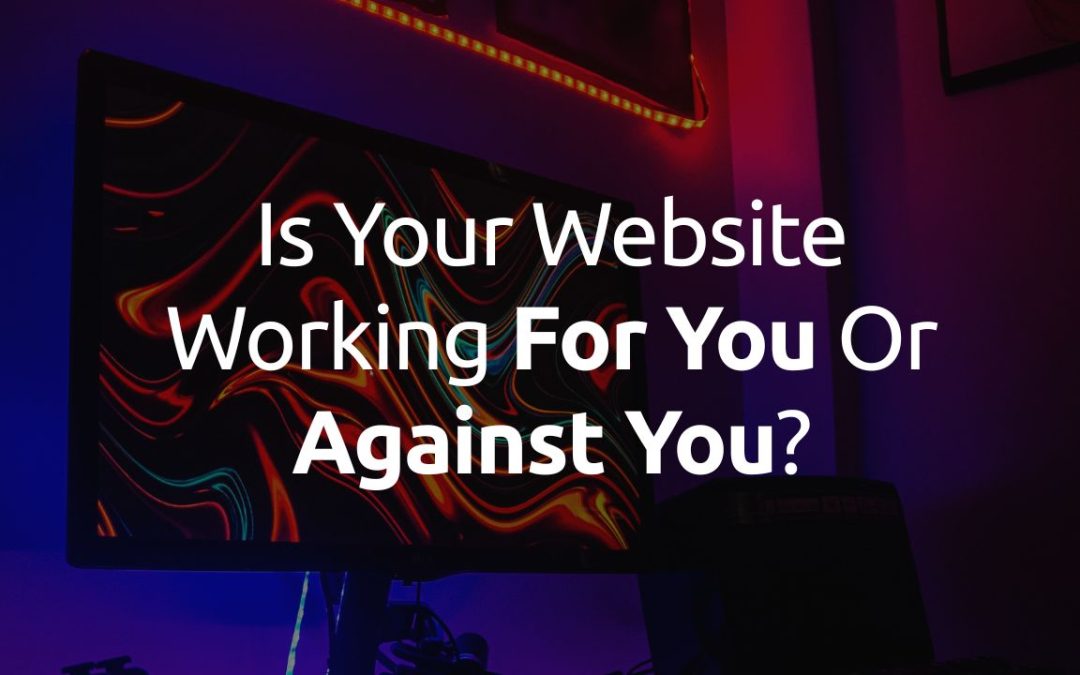Your website is often the first impression potential customers have of your business and we all know how much first impressions matter. But as time passes, digital trends change, businesses evolve, and customer expectations grow. So how do you know whether your site simply needs a little polish, or if it’s time for a full overhaul?
Let’s break it down by exploring the difference between a website refresh and a redesign, the signs you need one, and how to decide which path is right for your business.
What Is a Website Refresh?
Think of a website refresh like redecorating a room or repainting your home. The layout and structure stays the same, but you update the details like the furniture, repaint the walls, and swap out the art. In essence, the structure remains while the overall feel becomes more current and aligned with your brand.
A website refresh typically includes:
- Updating written content and messaging
- Swapping outdated images or graphics
- Tweaking color schemes, fonts, or spacing for modern appeal
- Improving mobile responsiveness
- Making minor UX improvements (like button placement or navigation flow)
- Optimizing page speed and loading times
You might need a refresh if:
- Your content is outdated but your branding is still strong
- Your site feels a little “off” but still functions fine
- You’re re-launching a product or campaign
- You want to optimize performance without starting from scratch
A refresh is faster, more affordable, and less disruptive – perfect if you just need to modernize your look or better align with recent brand changes. It doesn’t change the bones of your site – it improves the look, feel, and user experience while keeping your existing framework in place.
What Is a Website Redesign?
Now imagine knocking down walls and reworking the entire floor plan of that same room. That’s a redesign. A website redesign involves rebuilding your site from the ground up, often including changes to the content, layout, site structure, user flow and even platform.
A redesign might include:
- Rebuilding the site’s architecture and user experience (UX)
- Creating an entirely new visual design and layout
- Rewriting or reorganizing copy to reflect updated goals
- Adding new functionalities like e-commerce, booking systems, or client portals
- Migrating to a new CMS (e.g., from Squarespace or Wix to WordPress)
It’s a more complex process, but it lays the foundation for improved performance, user experience, and long-term scalability.
You likely need a redesign if:
- Your site isn’t mobile-friendly or accessible
- You’ve rebranded or pivoted your business
- Your website doesn’t convert or reflect your current offerings
- It’s been 4+ years since your last update
- Customers complain about it or bounce rates are high
A redesign can be more time-intensive and expensive, but it sets the foundation for better user experience, SEO, and conversions.
Signs You Need a Website Refresh
A refresh is usually the right choice when your site is still functional but needs modernizing. Here are some indicators:
- Your branding has slightly evolved, but the current site isn’t totally off-base
- The design feels a little outdated, but the structure still works
- Your content is mostly accurate but could use minor tweaks
- You’re launching a new product or campaign and want a cleaner presentation
- Your site performs reasonably well, but you want to improve metrics like bounce rate or time on page
A refresh is also ideal if you’re working with a smaller budget or tighter timeline. It allows for meaningful updates without the time commitment and investment of a full rebuild.
Signs You Need a Website Redesign
A redesign is the better choice when your site no longer aligns with your business goals or your visitors’ expectations.
You might need a full overhaul if:
- Your website isn’t mobile-friendly or responsive
- It’s been 3–5+ years since your last update
- You’ve gone through a major rebrand or changed your business model
- The site structure is confusing or outdated
- Your bounce rates are high and conversions are low
- Customers complain about the user experience
- You’re limited by your current platform or functionality
- Your competitors’ websites feel light-years ahead
A redesign may take more time and budget, but it can drastically improve user satisfaction, lead generation, and overall credibility.
How to Decide: Refresh or Redesign?
If you’re unsure where your site stands, start by asking yourself a few key questions:
- Does my website reflect who we are today as a business?
- Is it easy for users to find what they’re looking for?
- Is the mobile experience smooth and fast?
- Do I feel confident sending leads or partners to my website?
- Are we getting the traffic and conversions we expect from our site?
If most of your answers are “yes” with a few “but…” caveats, you may only need a refresh. If most answers are “no,” it’s time to consider a redesign.
Why It Matters
Whether you go with a refresh or a redesign, investing in your website is one of the smartest digital decisions you can make. A well-structured, visually appealing, and high-performing site can:
- Enhance credibility and brand perception
- Improve lead generation and conversion rates
- Support your sales and marketing efforts
- Serve as a more effective customer service or communication tool
Don’t underestimate how powerful your website can be when it’s working for you, not against you.
Final Thoughts
There’s no one-size-fits-all answer to whether you need a website refresh or redesign. It depends on your business goals, your current website’s performance, and the experience you want to deliver to your audience.
Need help deciding what’s best for your website? Our team can assess your current setup and recommend the most impactful next steps – whether that’s a tune-up or a full transformation.

